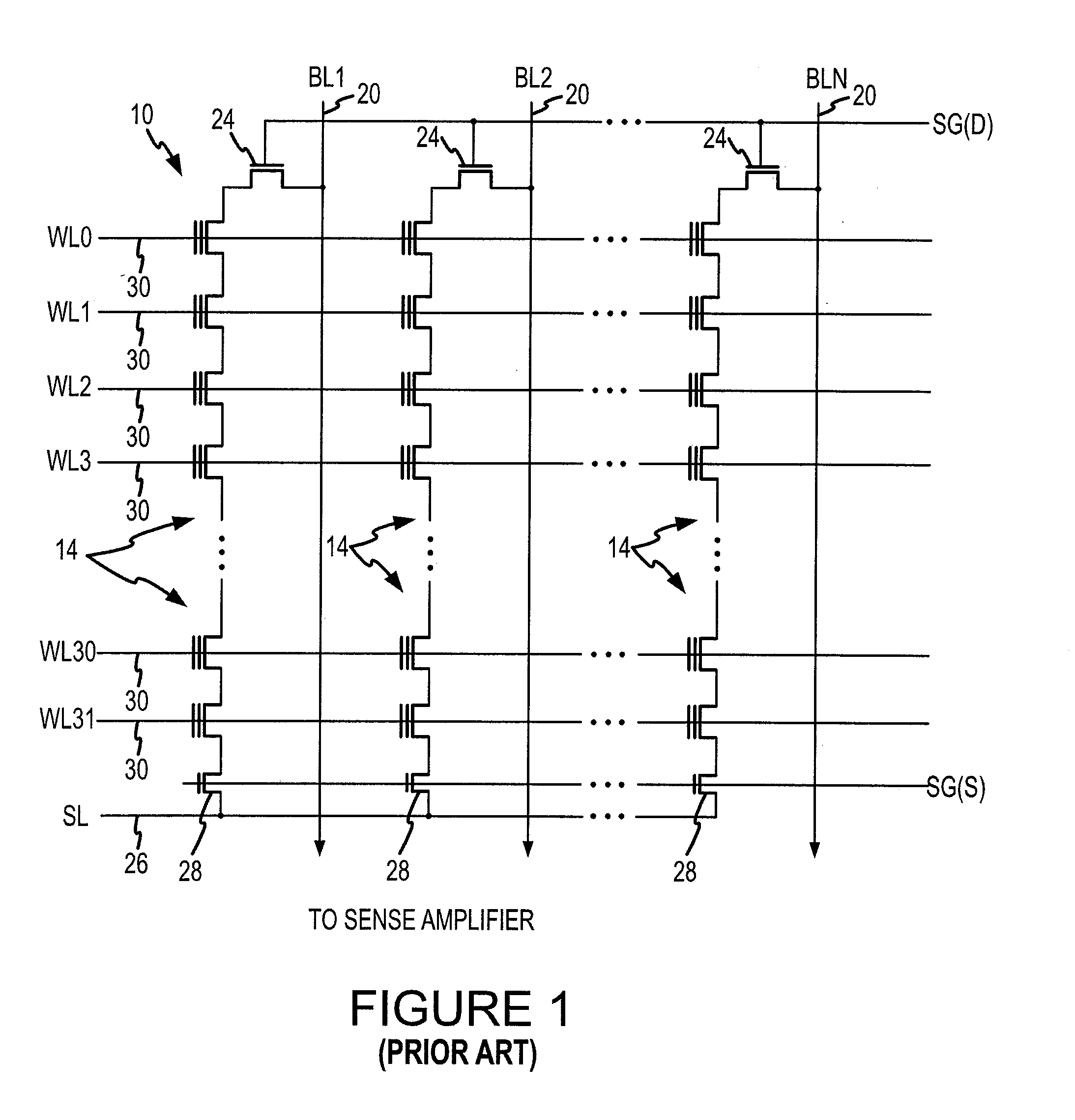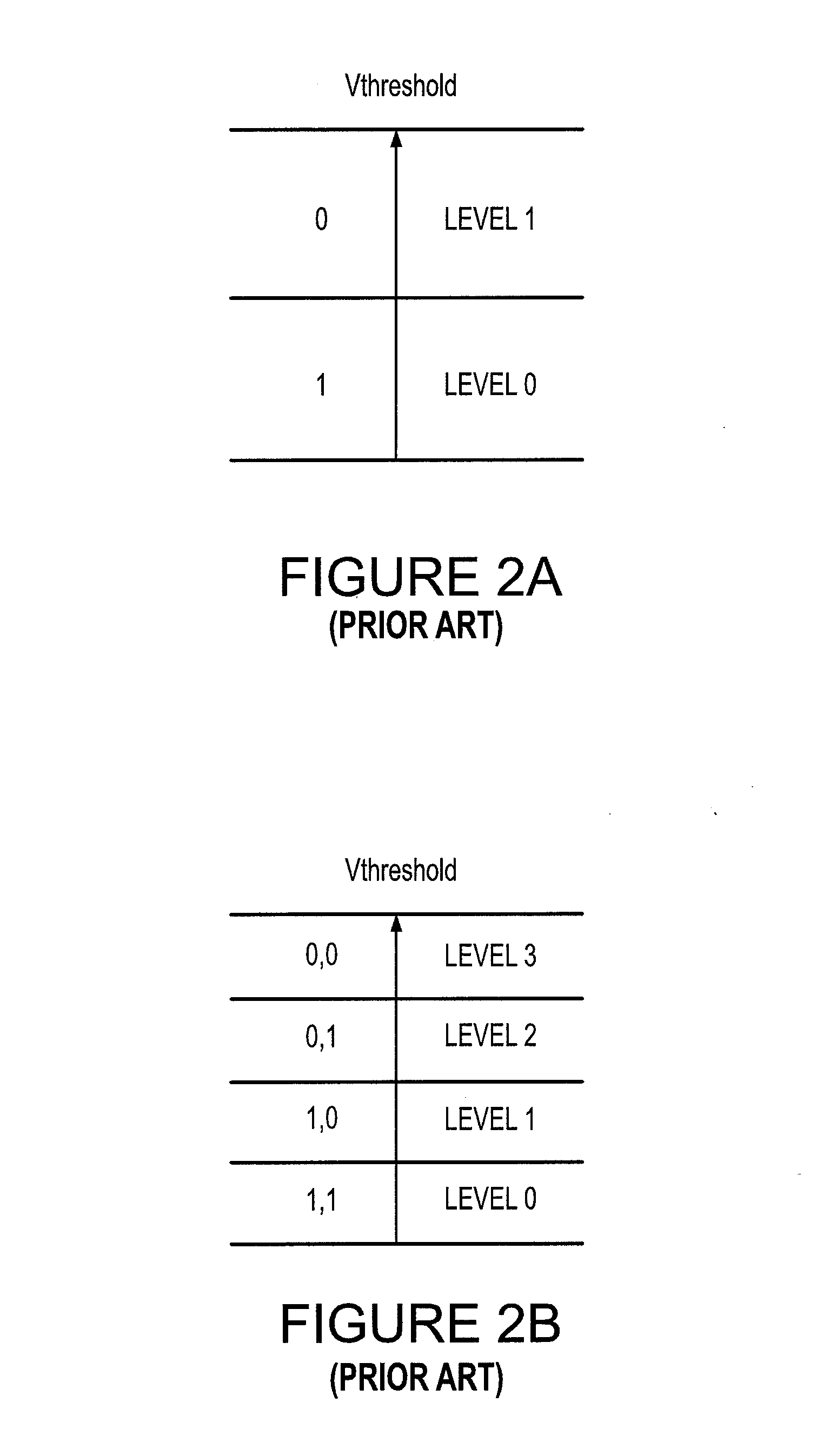Non-volatile memory device and method having bit-state assignments selected to minimize signal coupling
a non-volatile memory and bit-state assignment technology, applied in static storage, digital storage, instruments, etc., can solve the problems of data storage errors, the precision with which circuitry can store analog values on floating gates of flash cells, and the inability to store data in the same way across flash cells across an array and even across a single row
- Summary
- Abstract
- Description
- Claims
- Application Information
AI Technical Summary
Benefits of technology
Problems solved by technology
Method used
Image
Examples
Embodiment Construction
[0026]A flash memory device 100 according to one example of the invention is shown in FIG. 3. The flash memory device 100 includes an array 130 of flash memory cells arranged in banks of rows and columns. The flash memory cells in the array 130 have their control gates coupled to word select lines, drain regions coupled to local bit lines, and source regions selectively coupled to a ground potential as shown in FIG. 1.
[0027]Unlike conventional dynamic random access memory (“DRAM”) devices and static random access memory (“SRAM”) devices, command, address and write data signals are not applied to the flash memory device 100 through respective command, address and data buses. Instead, most command signals, the address signals and the write data signals are applied to the memory device 100 as sets of sequential input / output (“I / O”) signals transmitted through an I / O bus 134. Similarly, read data signals are output from the flash memory device 100 through the I / O bus 134. The I / O bus is...
PUM
 Login to View More
Login to View More Abstract
Description
Claims
Application Information
 Login to View More
Login to View More - R&D
- Intellectual Property
- Life Sciences
- Materials
- Tech Scout
- Unparalleled Data Quality
- Higher Quality Content
- 60% Fewer Hallucinations
Browse by: Latest US Patents, China's latest patents, Technical Efficacy Thesaurus, Application Domain, Technology Topic, Popular Technical Reports.
© 2025 PatSnap. All rights reserved.Legal|Privacy policy|Modern Slavery Act Transparency Statement|Sitemap|About US| Contact US: help@patsnap.com



